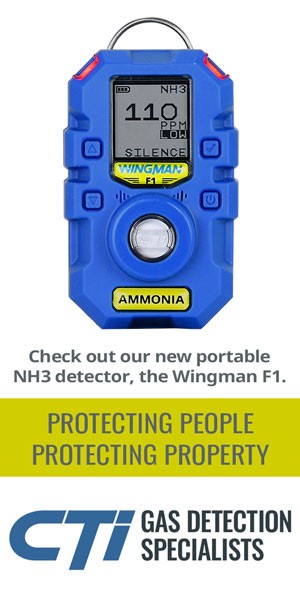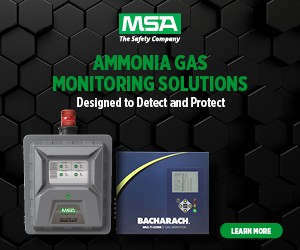The Sustainability Challenge
BY BRUCE NELSON
To date, activities within the International Institute for Ammonia Refrigeration have dealt exclusively with ammonia safety and ammonia refrigeration systems. That’s who we are, where we come from and what we’ve done well. Recently, however, it has become clear that IIAR needs to take up the challenge of promoting the safe and efficient use of all the natural refrigerants – ammonia, carbon dioxide, hydrocarbons, air and water. Suddenly we find ourselves in the position of analyzing and making comparisons between these natural refrigerants regarding the benefits and preferences of using one over the other, or in various combinations.This will create an interesting dynamic in IIAR that we have not had to navigate before. It will be up to us to manage this transition carefully so that practitioners of the various working fluids are given equal time and a fair hearing within our venues to promote their new ideas and technologies in ways that are fair and unbiased.
IIAR’s mission is to rigorously study all aspects of this industry to encourage dialogue and discovery in order to make the best use of all the natural refrigerants. We are obligated to understand which refrigerants are best suited to a particular application using sound science and research methodologies and to share our findings with the community.
Sustainable – that is to say energy efficient — use of the natural refrigerants is an important aspect of our mission. The energy efficiency of a refrigeration system is related in part to the working fluid itself, as in the inherently higher energy efficiency of an ammonia refrigeration system compared with a transcritical CO2 system. Efficiency is also of components and in how the system is operated. For example, a well-designed two-stage low-charge ammonia refrigeration system with VFD direct-driven reciprocating compressors will run with significantly less power consumption than will a conventional single-stage pumped-ammonia system using screw compressors.
It is also important to note that the differences in energy efficiency between different compression technologies can be amplified at part-load operation. Industrial refrigeration facilities are typically designed to operate at the hottest time of the year at the hottest time of the day; however, once the plant is switched on, it invariably lives its life at 50 or 60 percent of that full-load capacity. The part-load efficiency of the plant becomes profoundly important to power consumption. A careful examination of the part-load efficiency of compressors, fans, heat exchangers, pipework and every other part of the system is critical to managing the total cost of ownership of a facility and understanding that facility’s overall environmental impact.
Reducing the effects of our refrigeration systems on climate change is a part of the mission of IIAR. By applying natural refrigerants we are significantly reducing direct carbon emissions compared with the synthetic refrigerants. But direct emissions are only a part of the total amount of carbon emitted by a refrigeration plant over its lifetime — approximately 10% of the total. The other 90% of carbon emissions are due to the amount of power consumed, which is affected by the energy efficiency of the system. To reduce the total carbon footprint of our systems, we need to understand how to make our systems operate as efficiently as possible.
I and others believe it is time for IIAR to create an Energy and Sustainability Committee that is tasked with researching, educating, and advocating this very important issue. In the same way that IIAR has taken up the challenge of developing safety standards that can be used by regulatory bodies, it should also be developing guidance and documents that will influence energy codes and sustainability guidelines in ways that can be adopted directly by code bodies.
This new Energy and Sustainability Committee presents us with a new opportunity to do the right thing for both the public and the planet – truly a worthy challenge!











